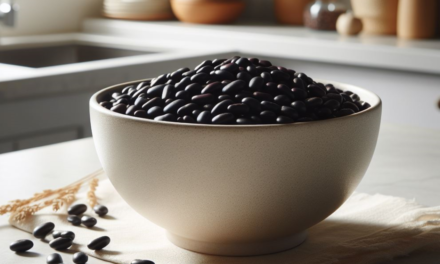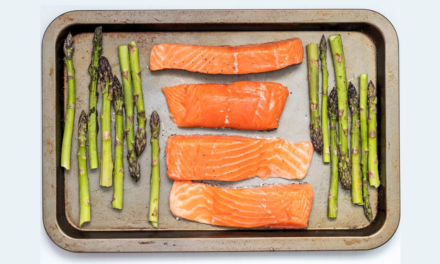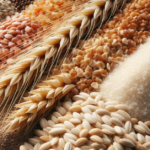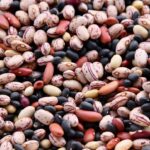In an online group for diabetics a woman recently asked “Why can’t we eat meats?” She had obviously been told that by someone she respected. As you might imagine the responses were all across the board, ranging from helpful suggestions from people with valuable information to flaming insults from those whose comments only seemed to be aimed at belittling the person asking the question.
The American Diabetes Association includes foods high in protein such as fish, chicken, meats, soy products and cheese, in what are called “protein foods” in their dietary recommendations.
As someone living with diabetes, I learned very early on that choosing the right types of meat is essential for managing my blood sugar levels effectively. The impact of meat consumption on health is significant, particularly when it comes to weight control and reducing the risk of complications like cardiovascular diseases, which are common concerns for those with diabetes.
What are the Benefits of Lean Meats?
Lean meats can play a crucial role in your diabetic diet by providing high-quality protein without excessive saturated fats that can harm heart health. Opting for skinless poultry, lean beef cuts, and fish allows you to enjoy the benefits of these protein sources while supporting my overall well-being.
For example, a 3-ounce serving of grilled skinless chicken breast provides a nutrient-rich, low-calorie meal that helps you feel satisfied for longer periods, which is key to avoiding unhealthy snacking and maintaining steady blood sugar levels.
A Few Recommended Lean Meat Choices
When selecting poultry, we often choose turkey or chicken breasts, as they are packed with essential vitamins and minerals like niacin and selenium. We rarely eat beef, but when we do, we opt for leaner cuts like sirloin or tenderloin as the go-to choices, as they provide iron and zinc without excessive fat.
On rare occasions we I also enjoy adding pork tenderloin or boneless loin roast into our meals. They offer a delicious and versatile alternative to other meats.
And when it comes to fish, I include varieties rich in heart-healthy omega-3 fatty acids, such as salmon or mackerel, for an added nutritional boost.
Healthy Cooking Methods to Keep The Fat Out
To prepare these lean meats in a diabetes-friendly way, it’s a good idea to use cooking methods like grilling, baking, or broiling. These techniques allow you to enjoy the natural flavors of the meat without adding unnecessary fats or calories. From time to time my family will use an instant pot or a convection oven to cook meat without adding extra oils.
You might also like to experiment with flavorful marinades made with herbs, spices, and citrus juices, which can enhance the taste of lean meats without compromising your dietary goals.
A Few Meats to Avoid
A common suggestion among most diabetes professionals to avoid processed meats like sausages, luncheon meats, and bacon, as they are often high in sodium and saturated fats, which can increase the risk of heart disease and other complications.
It follows that steering clear of high-fat cuts of meat and cooking methods like frying or breading, as these can quickly add excessive calories and unhealthy fats to your meals.
Pairing Lean Meats with Fiber-Rich Foods
One tasty way to create a balanced and satisfying meal is by pairing lean meats with fiber-rich foods like vegetables, legumes, and whole grains. Fiber helps slow down the absorption of sugar into my bloodstream, preventing rapid spikes in blood glucose levels.
For instance, you might enjoy grilled salmon with a side of quinoa and roasted Brussels sprouts, or a lean turkey burger on a whole-grain bun with a mixed green salad. This combination not only supports blood sugar management but also provides a variety of nutrients and a feeling of fullness that can prevent overeating.
The Importance of Professional Guidance
While navigating the world of meat selection for a diabetic diet can be challenging, consulting with a dietitian has been invaluable for many. They can provide personalized guidance on choosing the right meats, portion sizes, and cooking methods to support your health goals.
Use their expertise to better understand the importance of pairing lean proteins with fiber-rich foods for optimal glycemic control and overall well-being.
Takeaways
By making informed choices about the types of meat you consume and how you prepare them, you can enjoy a diverse and satisfying diet that aligns with your individual diabetic diet needs. With the right knowledge and support, managing diabetes through smart meat selection is not only possible but can also contribute to a better quality of life. Here are the key points to remember:.
- Lean meats like skinless poultry, lean beef cuts, and fish are excellent protein sources for managing diabetes.
- Avoid processed and high-fat meats, as well as unhealthy cooking methods like frying or breading.
- Pair lean meats with fiber-rich foods to slow sugar absorption and promote satiety.
- Healthy cooking methods like grilling, baking, and broiling are best for preparing diabetes-friendly meals.
- Consult with a dietitian for personalized guidance on meat selection, portion sizes, and meal planning.
###
Remember, proactive self-care matters. Every step we take, every decision we make to better manage our diabetes makes a difference in how well and how long we live. Choose wisely. Live long, love life and be well.
The information on this site is not intended or implied to be a substitute for professional medical advice, diagnosis or treatment. The information on this site is for informational purposes only and is not intended to diagnose, treat, or cure any type of disease or condition. Diabetes Control Today does not guarantee any results for your specific situation. In support of our website, we may share resources offered by trusted partners. If you purchase products from any of these partners, the owners of this site may receive a portion of the proceeds. These affiliations allow us to continue bringing you valuable, potentially life-changing content.


























